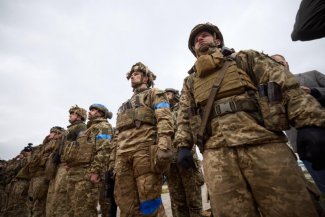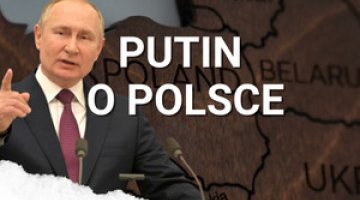Ukrainian forces continue their offensive in the south. Day 481 of the war

Ukrainian forces are still trying to break the Russian defences in Zaporizhzhia oblast and the western part of Donetsk oblast. They are renewing attacks in the areas south of Velyka Novosilka and south and west of Orikhiv. One site of particularly heavy fighting over the last few days is Piatykhatky, which lies immediately south of the village of Lobkove (25 km west of Orikhiv), which the Ukrainians seized in the first week of the offensive. This town apparently changed hands up to three times in a 24-hour period. On 19 June, Ukraine’s deputy defence minister Hanna Maliar acknowledged that Piatykhatky was the eighth locality the defenders had recaptured since they began their offensive in the Taurida direction; however, according to some sources, by the next day it had passed back into Russian control. In total, according to Maliar, over the last two weeks of fighting the defenders have moved up to 7 km into areas previously occupied by the enemy (south of Velyka Novosilka) and regained 113 km2 of territory. On the other hand, the spokesman for the Ukrainian forces of the Taurida direction, Valery Shershen, estimated the average daily depth of the offensives towards Melitopol, Berdyansk and Mariupol at 200 m. On 20 June, Ukrainian General Staff spokesman Andriy Kovalev reported that the offensives towards Melitopol and Berdyansk were already underway.
On 19 June, the leadership of the defence ministry and the Ukrainian army command addressed the course of the offensive. Defence minister Oleksiy Reznikov said that due to the specifics of the terrain and the density of the minefields, the offensive could not be expected to proceed as quickly as it did in 2022 in the Kharkiv oblast. He pointed out that the life and health of the soldiers is the main priority, and that the commanders are doing their job and should not be rushed. According to deputy minister Maliar, it must be understood that the enemy will not give up easily. She stressed that for the time being the effectiveness of the Ukrainian operations should not only be measured in terms of kilometres or the number of villages taken, because the operation has several tasks and the army is carrying them out as it should. Meanwhile the Commander-in-Chief of the Ukrainian army, General Valerii Zaluzhnyi announced that despite fierce resistance from the enemy, Ukrainian soldiers are doing everything possible to liberate the occupied territory, and the operation is going according to plan.
The intensity of the fighting increased to the west and south of Kreminna. On 19 June, according to Ukrainian sources, after pulling up additional forces the invaders made an unsuccessful attempt to break the defenders’ positions towards the Zherebets and Donets rivers. The Russians slightly improved their position south of Marinka (in the Novomykhaylivka and Pobieda areas). In the vicinity of Avdiivka, west of Bakhmut and north-east of Kupiansk, the intensity of the clashes was significantly lower than in the other areas, and there were breaks in the fighting lasting around 24 hours. On 18 June, clashes took place in the area of Vuhledar, where relative calm had prevailed for a long time. According to the Ukrainian General Staff, the total number of clashes is still around 40 per day.
On 18 June, the Ukrainian General Staff reported four hostile missile attacks. The following day, Russian missiles were launched at Odessa (the Ukrainian Air Force Command reported that the four Kalibr missiles fired at the city had been neutralised) and Vuhledar, which was hit by six missiles. On 20 June, seven Iskander-M and/or S-300 missiles hit Zaporizhzhia, and three Shahed-136/131 kamikaze drones struck a critical infrastructure facility in Lviv. In total, according to the Air Force Command, the Russians used 35 drones of this type for the attack, 32 of which were downed (including 20 near Kyiv, from where shrapnel damage was reported). In addition, two enemy missiles hit Avdiivka. In the afternoon of 16 June, Kherson was the target of indiscriminate shelling (23 people were wounded), as in the following days were Ochakiv (mainly the port) and Nikopol (two critical infrastructure facilities were destroyed). In turn, on 18 June the Ukrainian side carried out a successful rocket attack (most likely using a Storm Shadow cruise missile) on a Russian ammunition depot in Rykove near Henichesk in the occupied part of Kherson oblast.
On 16 June, Sweden’s defence minister Pål Jonson announced that, as part of a $23 million package of military aid to Kyiv (the twelfth of its kind), his country was planning to set up logistics centres to handle the arms it has donated. These would be set up near the Ukrainian border, most likely in Poland. The Swedish government has agreed to send up to 60 military personnel to participate; the centres are to be staffed by 30 specialists from Sweden, who will also train Ukrainian personnel. They are scheduled to be launched in early autumn, and should be operational by the end of 2025. As part of the package, Stockholm also intends to subsidise Ukraine’s military support funds (via NATO’s Comprehensive Assistance Package Trust Fund and the UK’s International Fund for Ukraine), and will offer familiarisation training for Ukrainian pilots on JAS 39 Gripen fighters. On the same day, the Belgian government passed its fifteenth military support package for Ukraine. It is worth €11 million, and will include M113 tracked transporters which have been withdrawn from service in the Belgian army. The handover will take place once their overhaul has been completed; the number of vehicles involved has not been disclosed.
Also on 16 June, Minister Reznikov announced he had signed a declaration of intent with the Czech and Slovak defence ministers on the joint acquisition and operation of infantry fighting vehicles. Czech media elaborated that the document had been signed the previous day in Brussels, and that it concerned the Swedish CV90 BWPs whose purchase had previously been decided on by Prague (in April 2023, 246 units) and Bratislava (in December 2022, 152 units). Ukraine was expected to express an interest in purchasing up to 1000 vehicles of this type.
On 17 June, the Canadian defence ministry announced the delivery to Kyiv of another part of the military support package announced back in April. This latest part consisted of 6750 assault rifles, 1.1 million 7.62-mm calibre cartridges, 250,000 5.56-mm calibre cartridges and 70,000 sniper cartridges. On 19 June, the Danish parliament approved the transfer of a total of 21.9 billion kroner ($3.2 billion) in military aid to Ukraine between 2023 and 2028, as announced in May: 7.5 billion kroner in 2023, 10.4 billion kroner in 2024 and 1 billion kroner each year between 2025 and 2028. On the same day, French president Emmanuel Macron officially confirmed the deployment of the SAMP/T air defence system to Ukraine.
Russian rhetoric describing the war with Ukraine has intensified. On 16 June, at a plenary session of the St Petersburg Economic Forum, Vladimir Putin reiterated that a key task of the ‘special military operation’ was the de-Nazification of Ukraine, and called Volodymyr Zelensky a “disgrace to the Jewish people”. He acknowledged that Russia could attack air bases outside Ukrainian territory if, for example, F-16 fighter jets capable of being used in wartime were stationed there. He pointed out that this posed a “serious risk of NATO’s further involvement in an armed conflict”. A day later, Kremlin spokesman Dmitri Peskov stated that the actions in Ukraine are in fact “a virtual war between Moscow and the collective West” and that the West’s support for Kyiv is making the conflict drag on, “leading to the situation in Europe becoming more tense and unpredictable”.
Russia’s Foreign Intelligence Service (FIS) is continuing its disinformation operation against Ukraine. On 19 June its director Sergey Naryshkin stated that he had information indicating that Kyiv may be continuing to work on creating a ‘dirty bomb’. He also notified that the Russian side had obtained information that the Ukrainian authorities had decided to divert some of the nuclear fuel from the Rivne nuclear power plant for use in the production of warheads.
On 16 June, the Security Service of Ukraine brought new corruption charges against former deputy defence minister Vyacheslav Shapovalov and former head of the public procurement department Bohdan Khmelnitsky. The officials purchased winter uniforms and bulletproof vests at inflated prices, and embezzled part of the funds allocated for them (around 1 billion hryvnias, or c. $27 million). The SBU recalled that the two suspects are already in custody, accused of committing similar crimes related to the purchase of low-quality ammunition and food for the army. The detainees face up to 12 years’ imprisonment.
The conflict between Kyiv and Budapest over the release of 11 Ukrainian soldiers of Hungarian origin from Russian captivity is escalating. On 19 June, the Ukrainian foreign ministry stated that the Hungarians were preventing the diplomatic-consular service from establishing contact with the Ukrainian citizens held in isolation, and that attempts to establish a constructive dialogue with the Hungarian authorities were being ignored. A day later, foreign minister Dmytro Kuleba stated that the release operation was of personal interest to Prime Minister Viktor Orbán, who wants to show Hungarians both at home and abroad that he is their sole defender. Also on 20 June, Hungarian foreign minister Péter Szijjártó stated that Budapest had not been involved in the release of the Ukrainian soldiers, and that it had been arranged on the initiative of “religious organisations”. He added that those released could contact the Ukrainian authorities “if they wished”.
On 19 June, the Ukrainian president’s plenipotentiary for children’s rights, Daria Herasymchuk, reported that 373 children had been returned to the country from Russia. The Ukrainian authorities have the personal data of 19,499 deported minors. However, they point out that the number could be much higher, possibly reaching between 200,000 and 300,000. Their return is being hindered by the Russians, who do not recognise these children as deported, but rather evacuated. Herasymchuk pointed out that Russia formalises the status of the abducted Ukrainian minors by handing them over to selected families for ‘temporary care’.
Commentary
- The statements from the leadership of the Ukrainian defence ministry confirm that the attempts to break through the enemy’s defences in Zaporizhzhia oblast and the western part of Donetsk oblast over the past two weeks have been unsuccessful. Fighting is still taking place a few kilometres in front of the first line of Russian defences, and although the Ukrainian army has made advances on the field, the forces and resources it is committing are still insufficient to make a significant breach in the enemy’s lines. The Ukrainians are repeating attacks in the same places, slightly modifying the composition and size of the subunits they are using; this demonstrates that their objective is to break the defences in those areas which are most convenient for continuing their operations. However, even with a relatively large number of vehicles of various types at its disposal, as well as an advantage over the invaders in the number of soldiers, the Ukrainian army has nothing with which it can compensate for the paucity of its artillery and aviation. As a result, the aforementioned land advances come at a cost: subunits are hitting enemy fire traps that could not have previously been neutralised (vide the recent clashes for Piatykhatky). Using all the forces available carries a serious risk that, even if the Ukrainians break through the enemy’s first line of defence, the losses they incur in the process will prevent them from capitalising on their breakthroughs and achieving success on an operational scale – that is, cutting Crimea off from its land connection with Russia. This is all the more serious as further lines of fortifications will be waiting for the Ukrainians.
- If Ukraine throws all the potential it has so far kept in reserve into battle in the south, that would also significantly reduce its chances of responding to a Russian strike in other areas, mainly on the border of Kharkiv and Luhansk oblasts. It cannot be ruled out that, in the absence of success in the south, the Ukrainians would activate a strike in another direction, although such a move should not be regarded as a ‘real’ counter-offensive. It seems clear that a strike in the direction of the Sea of Azov has been prioritised: this has been demonstrated not only by the determination to try to break the Russian defences, but also by the use of the most modern and numerous of the Western armaments Ukraine has acquired (Leopard 2 tanks, Bradley infantry fighting vehicles). Perhaps in this situation the main reason for continuing the operations in the south is to display Ukraine’s determination to regain lost territory, and at the same time to demonstrate, before the upcoming NATO summit in Vilnius, that the support the West has provided up to this point is far from what is necessary to oust the invaders.






